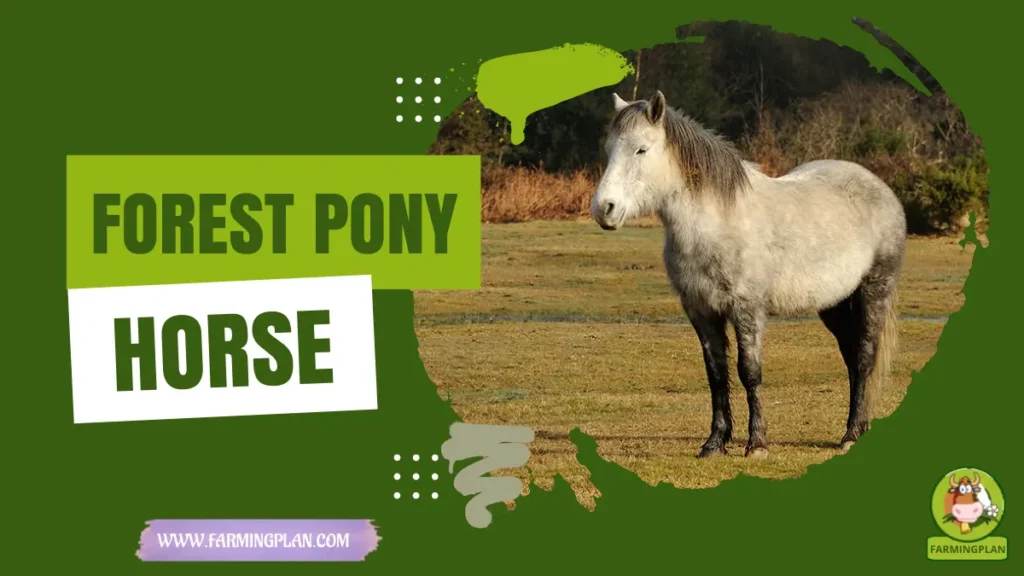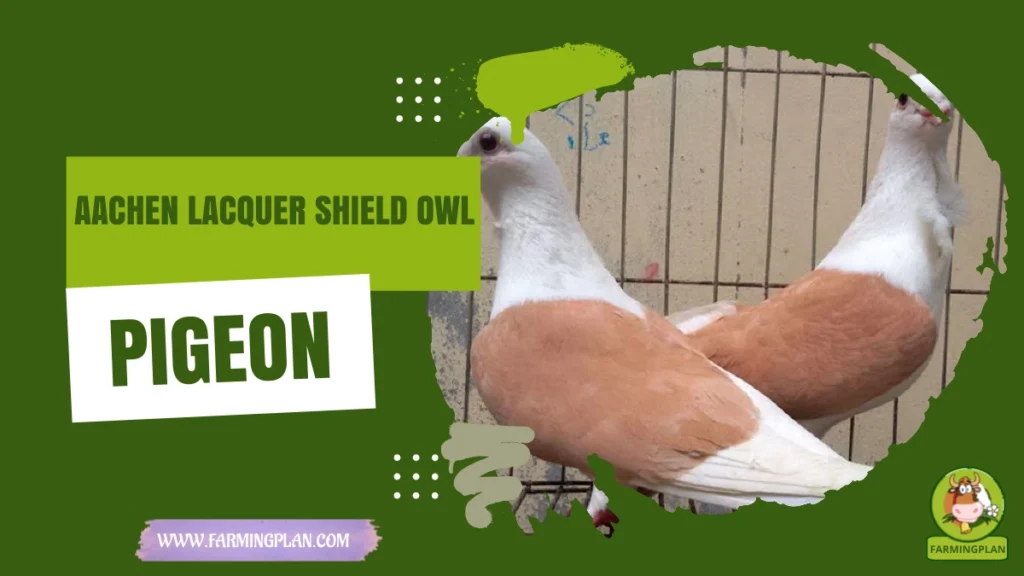If you’ve never met a Forest Pony Horse, you’re in for a treat. These little powerhouses from the British Isles are just about the toughest and most charming ponies I’ve ever worked with. Known more formally as New Forest Ponies, they’ve trotted their way into everything from Pony Club events to backyard trails. Whether you’re a breeder, a weekend rider, or just someone who adores native pony breeds, this one’s a gem. In this guide, I’ll walk you through their history, personality, care tips, and even how to raise one like a pro. Let’s saddle up and get started!

History & Origin Of The Forest Pony Horse
The New Forest Pony Horse has a history as wild and rugged as the landscapes they come from. These ponies have roamed freely in England’s New Forest since before the Norman Conquest in 1066. That’s over a thousand years of running through heathlands and woods, making them one of the oldest native pony breeds around. This rich history connects us to a long-standing tradition of equine care and companionship.
Over time, breeds like the Welsh Pony, Fell Ponies, and even Arabians were introduced to strengthen the bloodline. The goal? A sturdy, smart, and versatile little horse that could handle tough terrain and still be gentle with people. The New Forest Pony Horse Breeding & Cattle Society, formed in 1891, has played a major role in keeping their bloodlines strong and pure. When I walk through a horse show and see these ponies, I see more than a show animal—I see history on four hooves.
Key Characteristics Of The Forest Pony Horse
These ponies may be small, but don’t let their size fool you—they’re all muscle and heart. Most Forest Pony Horses stand between 12 to 14.2 hands high, making them perfect for kids and smaller adults. Their size keeps them agile, especially in events like Horse of the Year Show or trail rides over uneven ground.
You’ll see them in many classic New Forest Pony Horse colors—bay, chestnut, grey, and black are the most common. They’ve got a well-proportioned body, strong legs, and intelligent eyes. I love how their build balances both strength and grace. You can spot a purebred a mile away by the way they move—smooth, sure-footed, and proud, like they know they’ve got royal blood.
Read More: Arabian Horse: Unleash Power & Beauty
Temperament And Personality Of The Forest Pony Horse
The Forest Pony Horse temperament is one of the best you’ll find in the equine world. They’re clever, calm, and incredibly sociable. Whether it’s a young rider learning the ropes or a seasoned rider training for competitions, this pony is up for it. I’ve raised several, and let me tell you—they know how to read a room.
These ponies are known for being steady and dependable, which is why they’re so popular in Pony Club circles. But don’t mistake their easy-going nature for laziness. Give them a challenge, and they’ll rise to it with a sparkle in their eye. That’s why they’re often featured in pony sales targeted at families. They’re like the golden retrievers of the horse world—loyal, gentle, and eager to please.
Feeding Guide Of The Forest Pony Horse
Feeding a New Forest Pony Horse isn’t rocket science, but there are a few things to keep in mind. Since they evolved in tough conditions, they don’t need fancy feed—just good-quality grass, hay, and fresh water. I always recommend using a pony-specific pellet if your pony’s in work or needs a little energy boost. Skip the sugary treats—too many apples or molasses cubes can lead to health problems like laminitis. When I treat mine, I go with healthier options like the goodies from the Horse Treats And Gifts collection. Also, salt licks and mineral blocks are a must to balance electrolytes, especially during hot summers or after a ride.
Common Uses For The Forest Pony Horse
This pony wears a lot of hats. The New Forest Pony Horse uses range from show jumping and dressage to leisure riding and light farm work. I’ve even seen them pulling small carts and helping out on family homesteads. Their adaptability reassures us that this breed won’t let you down, whether you’re just starting out or want a pony for your kids. They’re also very popular in horse shows and local exhibitions. Thanks to their calm nature, they do well under pressure and love to show off a bit. Whether you’re into competitive sports or just need a four-legged buddy for weekend trail rides, this breed fits right in.
Read More: Mustang Horse: Unleashing the Untamed Spirit of Freedom and Strength
Special Features Of The New Forest Pony
Let’s talk about what makes the Forest Pony Horse truly shine. First off, they’re hardy—like, survive-a-rainstorm-without-a-blanket hardy. I’ve left mine out on some rough nights and found them as content as ever come morning. Their strong hooves, intelligence, and excellent memory make training a breeze. This hardiness and healthiness should give you confidence in your ability to care for them.
They also have an incredible sense of direction and bond deeply with their owners. I’ve had ponies recognize me from across the pasture and trot right over like we’ve got unfinished business. Compared to other pony breeds, their adaptability and personality make them stand out big time in the mountain and moorland ponies group.
Health Issues & Preventive Care For New Forest Pony Horse
Even the toughest pony has its weak spots. New Forest Ponies are generally healthy, but they’re not immune to issues like laminitis, sweet itch, and joint stiffness in older age. I keep an eye on their weight, especially in spring when fresh grass can trigger laminitis.
A regular grooming routine helps spot skin conditions early. I always check under their manes and tails for signs of irritation. Preventive care includes routine vaccinations, deworming every 8–12 weeks, and dental checkups twice a year. Also, don’t skip proper hoof care—pair those trimmed hooves with gear from the Horse Riding Socks Collection, which provides extra protection and comfort, to keep both of you comfy!
Smart Care, Happy Hooves – A Forest Pony Thrives When Love, Routine, And Trust Lead The Way!
Step-by-Step Pet Owner Care Guide For Forest Pony Horse
Looking to care for a Forest Pony Horse like a pro? This step-by-step pet owner guide is a comprehensive resource that walks you through everything—from setting up the perfect shelter and feeding smart, to grooming tips, training advice, and vet care routines. Whether you’re new to pony ownership or just want a refresher, this guide provides detailed instructions and practical tips to help you raise a happy, healthy New Forest Pony Horse with confidence and care.
Step 1: Setting Up The Right Shelter And Space
Before your pony even steps off the trailer, make sure its new home is ready. I always recommend a well-drained paddock with a simple run-in shelter. These ponies are used to roaming the New Forest, so space is key. I aim for 1–2 acres per pony, with strong fencing—no barbed wire, please! Electric tape fencing works wonders, especially for curious ponies that like to test their limits.
Shelter doesn’t need to be fancy—just a sturdy three-sided shed to block wind and rain. Toss in some straw bedding, a salt lick, and a water trough, and you’re good to go. Shade trees are a bonus, but make sure no toxic plants are within reach. Trust me, these ponies will nibble on anything.
Step 2: Choosing The Right Feed Plan
Feeding time is one of my favorite parts of the day. I feed a mix of hay and grass as a base, then tailor the diet with pony cubes or senior mix depending on the age and activity level. For hard-working ponies, a handful of oats gives them a boost—but too much can make them jittery. Don’t forget hydration. Keep that water trough clean and full—ponies can turn their noses up at dirty water. And please, ease up on the carrots! One or two are fine, but don’t overdo it. I like using forage balancers to ensure they’re getting their vitamins, especially in winter when grazing is limited.
Step 3: Grooming And Daily Health Checks
A daily brush-down does more than keep them pretty—it’s bonding time. I start with a curry comb, follow with a stiff-bristle brush, and finish with a soft one for their face. Don’t skip the hooves—pick them out daily to prevent thrush and cracks. I also check for cuts, swelling, and signs of colic. If your pony’s rolling a lot or refusing food, it’s time to call the vet. Keeping a grooming kit handy makes this routine easy. Pro tip? Give treats after grooming. It builds trust and makes the next session smoother.
Step 4: Exercise, Bonding, And Training
Ponies love a job. Whether it’s a walk around the field, lunging, or a light hack, they need regular movement. I start training young ponies with groundwork—teaching them to lead, stop, and turn with a halter. Once they’re confident, we move on to light riding. Bonding happens during quiet moments—grooming, hand-walking, or just hanging out in the paddock. They’ll learn your voice, your scent, and even your mood. Keep training sessions short and sweet, and always end on a positive note. I swear by clicker training and lots of praise.
Step 5: Routine Vet And Farrier Care
Don’t skip this part—no matter how healthy your pony seems. I schedule vet visits twice a year for vaccines and dental work. Deworming is every season, based on fecal tests. My farrier comes every six weeks for a trim, even if my pony’s barefoot. I keep a whiteboard in my tack room with upcoming appointments, vaccine dates, and worming reminders. Choose a vet who knows equines inside and out—it’s a game changer when you’re facing an emergency or just need advice.
Read More: Appaloosa Horse: Why This Stunning Breed Is Taking Over the World
Expert Tips & Best Practices
- “Always Groom Before Feeding—It’s Bonding Time And Prevents Skin Irritations.”
- Use a fly sheet in summer to reduce sweet itch flare-ups.
- Let your pony meet your kids before buying—watch how it reacts.
- Rotate grazing areas every few weeks to keep parasites down.
- Invest in a weatherproof blanket for extreme winters, even if they’re hardy.
FAQ
How much does a New Forest Pony cost?
You’ll pay around £1,000–£5,000 depending on training, age, and bloodline.
What is the average height of a New Forest Pony?
Between 12 to 14.2 hands high—perfect for kids and smaller adults.
Are New Forest Ponies good for beginners?
Absolutely! They’re calm, friendly, and very trainable.
Where can I buy a New Forest Pony?
Check local breeders, pony sales, or official listings from the New Forest Pony Breeding & Cattle Society.
What colors do New Forest Ponies come in?
They’re commonly bay, black, grey, or chestnut. Rarely, you’ll spot a skewbald or piebald.
Conclusion
The Forest Pony Horse has everything I admire in a pony—grit, charm, and a whole lot of personality. Whether you’re a weekend rider, a seasoned breeder, or just starting your pony journey, this breed fits right in. With the right shelter, good food, regular care, and a little love, they quickly become more than just ponies—they become trusted companions and beloved members of the family.


